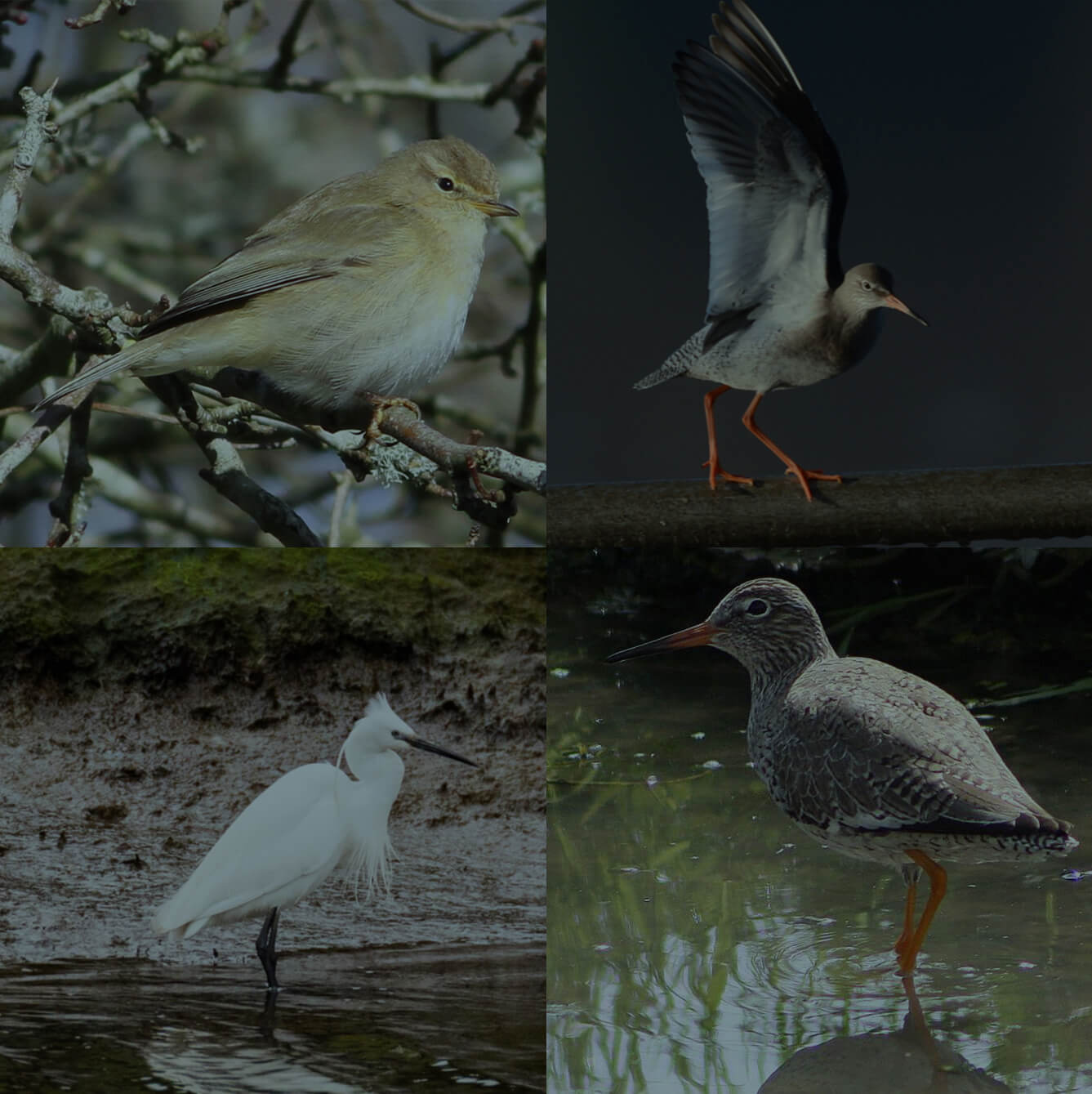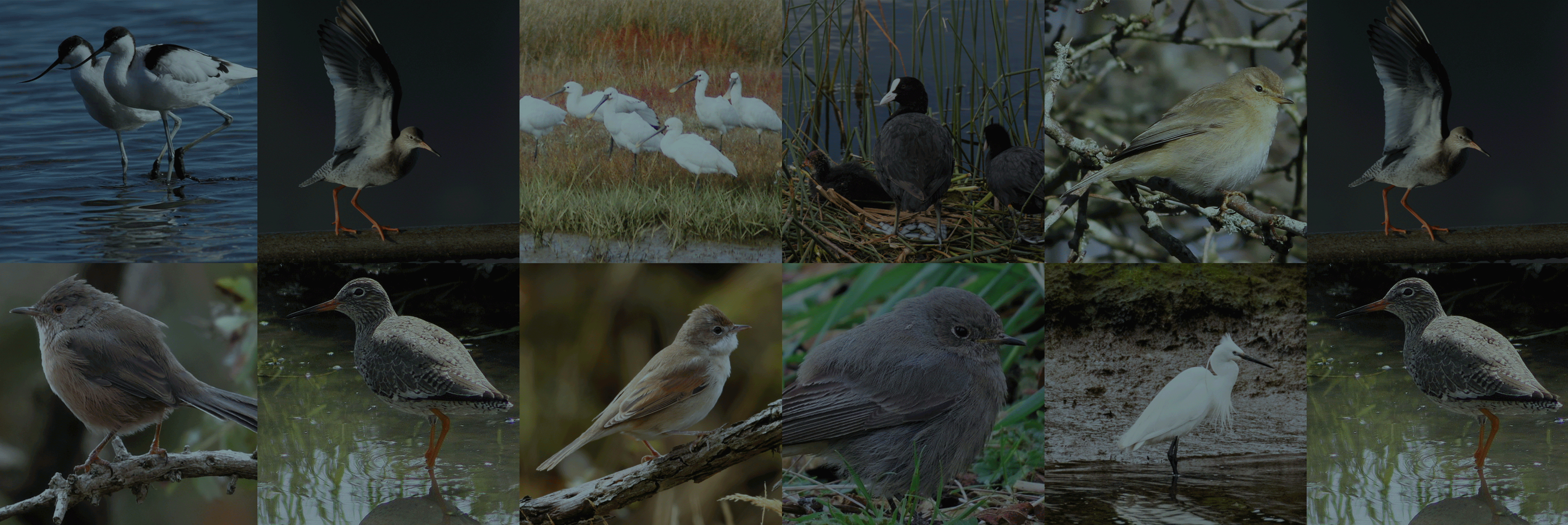An official account of all species that have been recorded and reported by birdwatchers and naturalists in the Poole Harbour area since records began.
The data for this list has been extracted from various sources, but George Greens 'The Birds of Dorset', Mansel-Pleydell's Birds of Dorsetshire, Naylor’s reference manual of rare birds and the back catalogue of Dorset bird reports have provided most information. Data is currently still being researched and records will be updated accordingly.
You can view this information in two different ways. Our alphabetical list provides information on the status of each species within the harbour, finder dates and names, photos and favoured locations. By clicking on the Systematic List button you will be presented the full Poole Harbour systematic list which includes status of species, pending records and historical accounts.
To date, 333 species have occurred and have been accepted within the Birds of Poole Harbour boundaries. A further 11 distinct subspecies have also been seen. In addition, we have two species/subspecies which have been recorded, but are awaiting acceptance by the appropriate records panel.
There are a handful of historical records, for which there is currently insufficient information to allow their inclusion onto the Poole Harbour list, but are believed to be genuine records. They are listed at the end of the list.
Finally, there are a number of feral or escaped species that have been recorded within the Birds of Poole Harbour boundaries. They are included for completeness, but are not included on the Poole Harbour list.
We would be interested in hearing details of any species that do not appeared on this list.
The Birds of Poole Harbour systematic list is a PDF which you can view by clicking on the button below. It was last updated on December 2019.
Full Poole Harbour Systematic List
Alpine Swift
Latin Name
Apus melba
Status
Vagrant
Site And Records Information
With only 6 Poole Harbour records, none of which were twitchable, a long stayer would be widely appreciated.
1 on 29th May 1950 at Wareham (BB47;354)
1 on 1st May 1987 at Godlingston Heath, Studland (I.M. Lewis, J.A. Lewis, S.J. Morrison)
1 on 26th Apr 1992 Over Branksome Chine (J.H. Blackburn)
1 on 31st Mar 2002 at Studland (N. Hopper)
1 on 5th Mar 2003 over Alington Rd, Poole (P. Robinson)
1 on May 26th 2022 over Old Harry, feeding along the cliff edge, often giving views down to 1m (Kevin)
American Golden Plover
Latin Name
Pluvialis dominica
Status
Vagrant
Site And Records Information
An incredibly exciting find by a visitor to the area who saw this first for Poole Harbour four days in a row without knowing how special it was. Photos of the bird were sent to Birds of Poole Harbour on the fourth day when it had sadly then disappeared never to be seen again. It was later identified by Killian Mullarney.
Brand’s Bay 1 present at Redhorn Point from 19th-22nd Jun 2018. (D Derrick, C Robinson per BoPH). In one of the more extraordinary rarity occurrences of the year, this bird was identified only from a photo sent on 23rd June to Birds of Poole Harbour by the observers, who could not put a name to it.
American Herring Gull
Latin Name
Larus smithsonianus
Status
Vagrant
Site And Records Information
At the time of its discovery American Herring Gull was treated as a race of Herring Gull rather than a full species in its own right. Interest in this bird was high and it was widely twitched. However, there are some who wish that they had put more effort into seeing it at Lytchett Bay on what was presumably its nightly commute to roost in the Wareham Channel!
1 from 4th Mar-6th May 2002 at Corfe Mullen tip (J. Lidster et al.)
1 on 18th Mar 2002 at Lytchett Bay (D. Fairhurst) (same as above)
American Robin
Latin Name
Turdus migratorius
Status
Vagrant
Site And Records Information
1 on 15th-16th Jan 1966 in Brands Bay (T. Haysom et al.). It was then relocated in a Canford Cliffs garden, Poole, from 18th Jan-10th Mar 1966 (M. Crosby et al.).
American Wigeon
Latin Name
Anas americana
Status
Vagrant
Site And Records Information
Considered an escape until recently a lovely male was on Brownsea from 2nd to 5th May 1987 and was first seen in Christchurch Harbour. However, it has never been submitted, neither has another record from Arne between 4th November to 4th December 1990. There have been 13 Dorset records involving c11 individuals. That said there have been none since the 5th Dec 2000 at Abbotsbury. This contrasts with the British status of this species which is described as stable, averaging c15 per annum over the last 25 years. Surely one to look for. Is Holes Bay the most likely location given the large flocks of Eurasian Wigeon which congregate there to feed on the algal matts? Of the 13 birds recorded in the county statistically we should get two or three!
Aquatic Warbler
Latin Name
Acrocephalus paludicola
Status
Scarce Passage Migrant
Site And Records Information
This RED Listed species breeds in Eastern Europe. Its regular migration pattern takes a route west through the low countries, through France to the Atlantic coast, where it turns south. It then continues to its wintering grounds in West Africa. When weather systems are suitable small numbers of birds are drifted to the UK, mainly along the south coast.
There is considerable conjecture as to why numbers of birds in Dorset (and indeed Great Britain) have declined so much since 1997. There is no doubt that the decline is real and not due to a change in effort by ringers. Ringing data from sites in France is not reflecting the decline in the UK. Whilst numbers recorded each year do vary (no doubt due to weather conditions and ringing effort) numbers have remained broadly stable between 1998 and 2007. In 2009 and 2010 concerted effort in a single study covering 44 ringing sites produced ringing totals of 874 and 636 birds respectively. Applying statistical methods it was demonstrated that the number birds passing through France on autumn migration was between 24,000 and 30,000. One potential reason therefore for the decline in British records is that the light south-easterly winds in August needed to bring them here are now occurring much less frequently. Bird ringing at Lytchett Bay has shown that when the weather is right this species does still occur with some regularity.
Aquatic Warbler prefers damp rush and sedge beds. It is a hard bird to find “in the field” and as a consequence many are only recorded when they are mist netted for the purpose of ringing. Ringing activity was intense at Keysworth from 1991 to 2000. An average of 11 birds were ringed per year. Once this activity ended the focus shifted to Lytchett Bay. The coverage here is much less intensive and less frequent.
All Poole Harbour records:
1 on 26th Jul 1976 at Brownsea
1 on 22nd Aug 1983 at Lytchett Bay (trapped) (I.M.Lewis)
1991 – 21 trapped at Keysworth between 17th Aug and 10th Sep. (Stour Ringing Group)
1992 – 12 trapped at Keysworth between 7th and 14th Aug. Inc 4 on 14th. 1 additional bird on 18th Sep (Stour Ringing Group)
1993 – 7 trapped at Keysworth between 10th Aug and 6th Sep. (Stour Ringing Group)
1994 – 17 trapped at Keysworth between 2nd Aug and 5th Sep. (Stour Ringing Group)
1995 – 5 trapped at Keysworth between 6th Aug and 21st Aug. (Stour Ringing Group)
1996 – 4 trapped at Keysworth between 8th Aug and 15th Aug. Coverage much reduced cp earlier years (Stour Ringing Group)
1997 – 11 trapped at Keysworth between 10th Aug and 20th Aug. Inc 3 on 11th. (Stour Ringing Group)
2000 – 4 trapped at Keysworth between 5th Aug and 10th Aug. Inc 3 on 5th. (Stour Ringing Group)
1 on 31st Aug 2002 at Keysworth (H.Wood-Homer)
1 “in September” 2003 at The Moors, Ridge (M.Slater)
1 singing on 16th Aug 2005 at Lytchett Bay (R.Gifford, S.Robson)
1 on 20th Aug 2011 at Lytchett Bay (trapped) (T.Elborn, S.Robson et al.)
2 on 18th Aug 2012 at Lytchett Bay (trapped) (S.Breeze, R.Gifford, S.Robson et al.)
1 on 25th Jul 2014 at Lytchett Bay (trapped) (K.E.Lane, S.Robson et al.). This adult was the earliest ever in Dorset.
1 on 31st Aug – 1st Sep 2016 at Lytchett Bay. Photographed in the field (I.Ballam et al.)
1 on 12th Aug 2020 at Lytchett Fields RSPB An adult female with a brood patch ringed (Shaun Robson et al, trapped) was subsequently re-trapped 16 days later in northern Spain, a movement of 983km.
1 on 17th August 2021 at Lytchett Fields RSPB. A juvenile was trapped and ringed during a fixed westerly weather system (S.Robson & J.Parker). There were really no favourable weather conditions during the whole of August and to the best of our knowledge this was the only UK record this year!
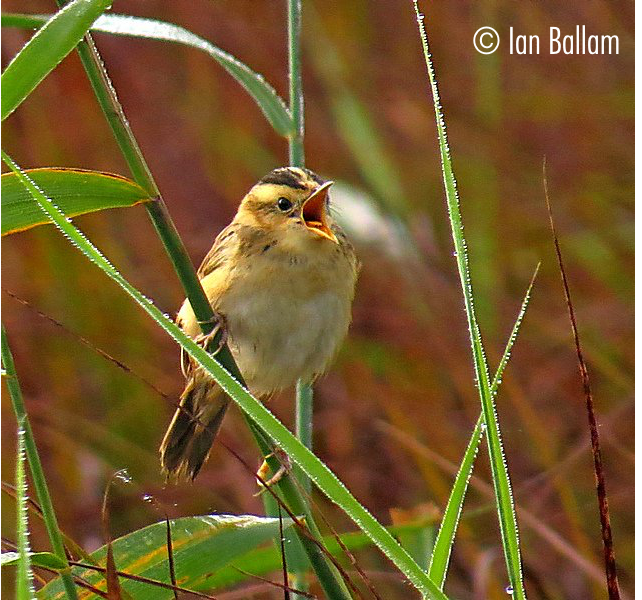
Arctic Redpoll
Latin Name
Carduelis hornemanni
Status
Vagrant
Site And Records Information
The only Poole Harbour records were accepted as two different birds and occurred as part of a massive eruption which brought more than 230 to Great Britain. They were of the race C. h. exilipes, now known as Coues’s Arctic Redpoll.
1 on 20th February 1996 at Studland Heath (Steve Morrison)
1 on 24th – 26th Mar 1996 at Studland Heath (Mark Constantine et al.)
Arctic Skua
Latin Name
Stercorarius parasiticus
Status
Passage Migrant
Site And Records Information
The most common of the four Skuas with ones and twos seen in spring, summer or autumn in Poole Bay, off Branksome, or in Studland Bay. Five have been recorded in a single day on a small number occasions. The earliest sighting of the year has been on 4th March twice, but most passage is from mid-April onwards. The best way to see Arctic Skua is to be at Branksome Chine between eight and ten on a spring or autumn morning with force five to six on-shore SSE winds and scan. Birds are normally migrating but sometimes they will sit on the water, in between bouts of harassing gulls or terns for food. There are a number of sightings from inside the harbour including from Brownsea, Middlebere, Lytchett Bay and over the RSPB Arne car park!
Recent records:
2023
Branksome Chine – 4 on 2nd Aug.
Studland – 3 on 2nd Aug in Shell Bay.
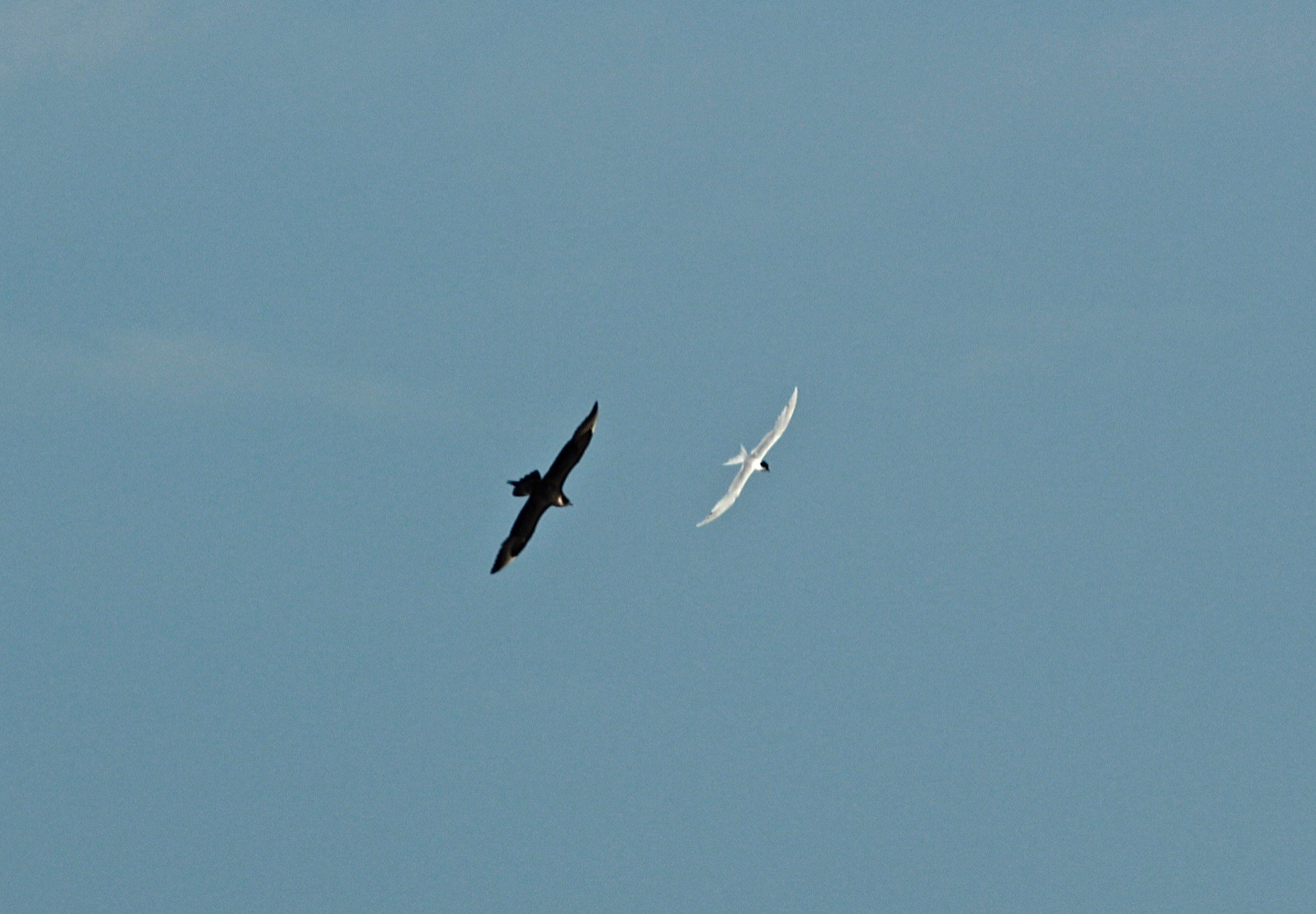
Arctic Tern
Latin Name
Sterna paradisaea
Status
Passage Migrant
Site And Records Information
Majority of reports relate to 1st year birds heading west in the autumn out in Poole Bay from Branksome Chine.They do get recorded inside the harbour, mainly on the Brownsea lagoon but also at Swineham GP, central harbour and Studland Bay.
Avocet
Latin Name
Recurvirostra avosetta
Status
Winter Visitor and potential new breeder
Site And Records Information
A great success story with numbers rising from 25 to almost 2000 in just 30 years. These numbers exceed the threshold for international importance, (700) and the harbour is now one of the most important British wintering sites with over 40% of the UK population. By far the best spots are the Brownsea Lagoon on a high tide with almost the entire wintering flock in one roost, and the Middlebere Channel mid tide November to February with around 500 feeding all along the channel. Other feeding areas include Lytchett Bay, Holes Bay and Arne bay. In 2017 and 2018 several pairs attempted to breed on the Brownsea Lagoon but all chicks were sadly predated. In 2020 3 pairs attempted to nest and we’re waiting to hear the outcome!
First arriving in the winter of 1948 Avocets have steadily built numbers since then, reaching national importance in 1978 with a maxima of 21. By 19th November 1998 the harbour maximum was 870, and was then exceeded on 5th December 2002 with a massive count of 1862!
Numbers of Avocet have risen throughout north-western Europe, and the suitability of Poole Harbours expansive mudflats to provide so many with winter quarters is something to be proud of.
The most consistent site is Brownsea Lagoon and there are always some birds here throughout the winter. The most popular feeding area is the entrance to the Wytch Channel and at Middlebere where counts of 800+ are not uncommon. In freezing weather, to feed birds move around the harbour for example there were 340 in Holes Bay on the 5th January 1997 and 420 on 8th Jan and 450 on 1st Feb. There were also 36 feeding on the drained Poole Park lake on 4th February 1996. Birds often occur in small numbers off Holton and in Brands and Newton Bay.
Avocet bred in the county for the first time on Brownsea in 1999 with two pairs hatching five young although none survived their second week. In addition 3 birds summered on the Brownsea Lagoon in 2003 and regular over-summering of small numbers continued. Pairs began nesting attempts again in 2016 and every year since, however, despite chicks hatching each summer, none have survived to full fledging age due to predation. In summer 2020 they nested well away from the Great Black-backed Gulls and it’s hoped they’ll successfully fledge chicks this year.
In terms of migration, birds start arriving back again in late July with numbers reaching 200-400 by September leaving again through February and into March. Ringed birds that fledged in Norfolk and Suffolk have been found in the wintering flocks as have birds from Holland, Germany and SW France.
The 5 year average over-wintering peak between 2014-2019 is 1535 and the highest count was of 1825 in January 2019
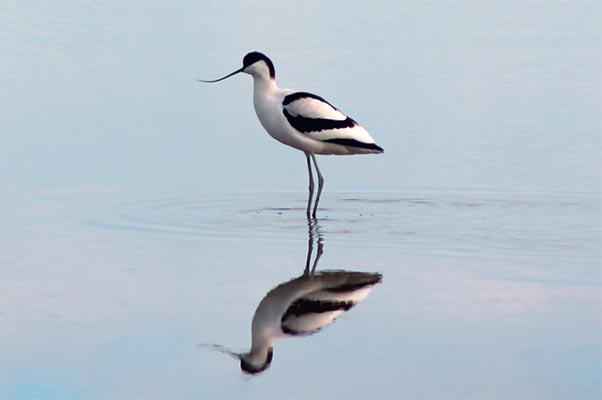
Call 01202 641 003
© 2025 Birds of Poole Harbour Registered Charity No. 1152615

